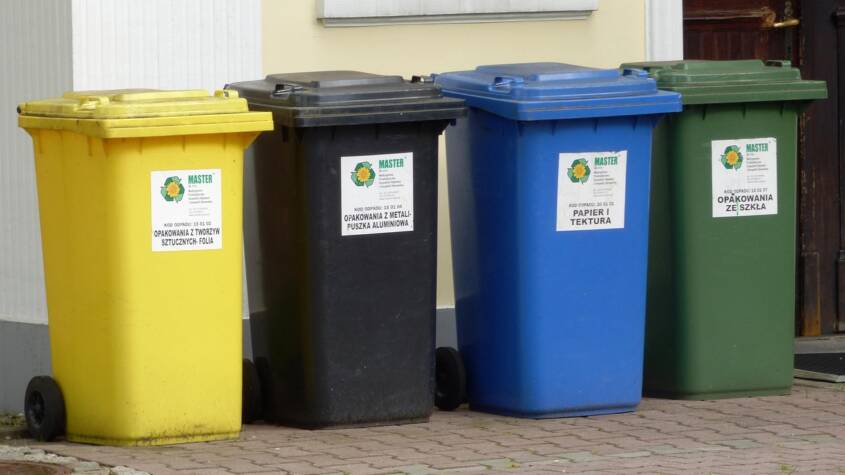
Many communities offer recycling dropoff locations, providing an essential service for those looking to reduce waste. Recycling drop-off sites are convenient and help ensure that recyclable materials are properly processed, supporting environmental sustainability. These sites typically accept a range of items, from plastics and metals to paper products, making it easier for individuals to contribute positively to the environment.
Understanding how to locate and use these drop-off centers can enhance one’s recycling efforts. Many municipalities list these facilities on their websites, offering hours of operation and accepted materials. This accessibility helps motivate more individuals to participate in recycling initiatives, further benefiting the community.
Engaging with local recycling drop-off options not only minimizes landfill waste but also promotes a culture of sustainability. By utilizing these resources effectively, residents can help foster a cleaner, healthier environment for future generations.
Benefits of Recycling Drop Off
Recycling drop-off centers offer significant benefits that impact the environment, provide economic advantages, and foster community development. These centers serve as essential elements in promoting sustainable practices and enhancing the quality of life for residents.
Environmental Impact
Recycling drop-off centers play a crucial role in reducing landfill waste. By providing accessible locations for individuals to dispose of recyclable materials, they divert a substantial amount of waste from landfills each year.
This reduces greenhouse gas emissions associated with waste decomposition. Additionally, recycling conserves natural resources by minimizing the need for raw material extraction, thereby preserving habitats and ecosystems.
Local governments often see improvements in air and water quality when recycling rates increase. These centers can also promote public awareness of environmental issues, encouraging more sustainable behaviors.
Economic Advantages
Recycling drop-off locations can lead to significant economic benefits for communities. They provide jobs in the recycling and waste management sectors, contributing to local employment rates. Cleaner communities also attract businesses and tourism, fostering further economic growth.
Local governments save on landfill costs when recycling reduces the volume of waste sent to landfills. These savings can be reinvested in community services and infrastructure.
Recycling additionally supports the recycling industry, which generates revenue through the sale of processed materials. When communities engage in recycling, they help stimulate local economies and create sustainable market opportunities.
Community Development
Establishing recycling drop-off centers encourages community engagement and responsibility. These facilities often serve as focal points for educational programs about sustainability and conservation.
Residents become more aware of their environmental impact and are motivated to participate in recycling initiatives.
Recycling centers can also foster a sense of community pride. Residents coming together to support recycling efforts can strengthen social ties and promote collaboration on other local projects.
Through workshops and events, these centers can inspire innovative solutions for reducing waste.
Setting Up a Recycling Drop-Off Point
Establishing a successful recycling drop-off point requires careful planning in several key areas. This includes selecting an appropriate location, determining the materials that will be accepted, and considering operational aspects for efficiency.
Location Selection
Choosing the right location is crucial. The drop-off point should be easily accessible to the community. High-traffic areas, such as shopping centers or community parks, are ideal.
Visibility is important; signs should clearly indicate the drop-off point. Proximity to residential areas can encourage participation.
Consider local zoning regulations and seek permission from property owners or local authorities before proceeding.
Materials Accepted
Identifying acceptable materials will help streamline the recycling process. Commonly accepted items include:
- Paper and cardboard
- Plastic bottles and containers (check for recycling symbols)
- Glass jars and bottles
- Metal cans
It’s important to define what cannot be accepted as well, such as:
- Food waste
- Hazardous materials
- Non-recyclable plastics
Providing clear guidelines helps reduce contamination and improves recycling rates.
Operational Considerations
Effective operations ensure the drop-off point functions smoothly. Regular monitoring and collection of recyclables are necessary to prevent overflow.
Staffing may be required to assist users and maintain order. Training staff on proper recycling practices is essential.
Implementing signage with guidance on sorting materials can help users understand what to recycle. Establishing partnerships with local waste management can enhance resource availability and logistics.
Using a designated schedule for collection can improve efficiency, ensuring the drop-off point maintains its cleanliness and organization.
Mini Excavators for Rent: Your Guide to Affordable and Efficient Construction Solutions
Mini excavators have become essential tools for various projects ranging from landscaping …









